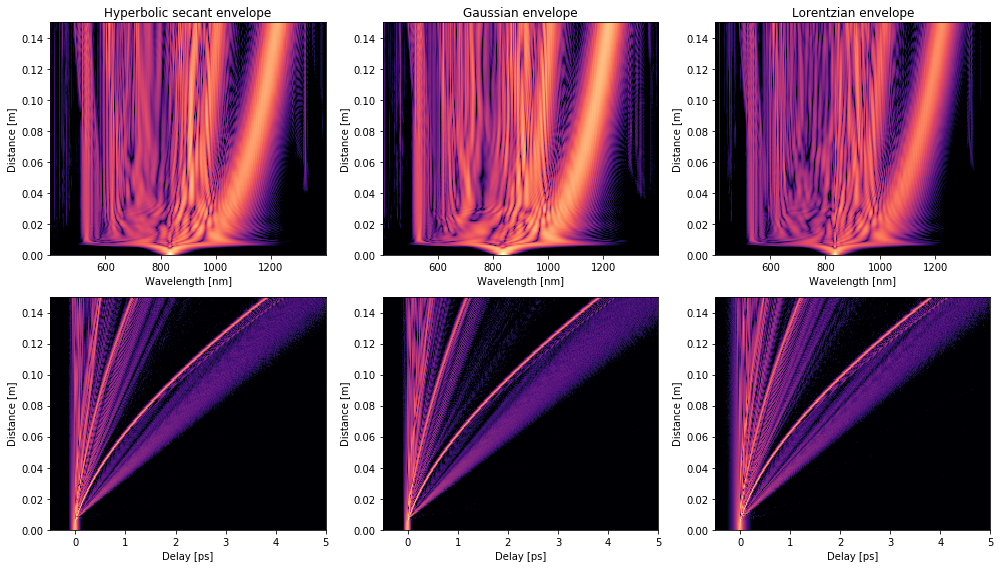Generalized Nonlinear Schrodringer Equation solver
gnlse is a Python set of scripts for solving
Generalized Nonlinear Schrodringer Equation. It is one of the WUST-FOG students
projects developed by Fiber Optics Group, WUST.
Complete documentation is available at
https://gnlse.readthedocs.io.
pip install gnlse
python -m venv gnlse or using conda.. gnlse/bin/activate.git clone https://github.com/WUST-FOG/gnlse-python.gitpip install . (or pip install -v -e . for develop mode) or set PYTHONPATH enviroment variable
python -m venv gnlse. gnlse/bin/activategit clone https://github.com/WUST-FOG/gnlse-python.gitcd gnlse-pythonpip install .
We provided some examples in examples subdirectory. They can be run by typing
name of the script without any arguments.
Example:
cd gnlse-python/examplespython test_Dudley.py
And you expect to visualise supercontinuum generation process in use of 3 types
of pulses (simulation similar to Fig.3 of Dudley et. al, RMP 78 1135 (2006)):

Modular Design
Main core of gnlse module is derived from the RK4IP matlab script
written by J.C.Travers, H. Frosz and J.M. Dudley
that is provided in “Supercontinuum Generation in Optical Fibers”,
edited by J. M. Dudley and J. R. Taylor (Cambridge 2010).
The toolbox prepares integration using SCIPYs ode solvers (adaptive step size).
We decompose the solver framework into different components
and one can easily construct a customized simulations
by accounting different physical phenomena, ie. self stepening, Raman response.
Raman response models
We implement three different raman response functions:
Nonlinearity
We implement the possibility to account effective mode area’s dependence on frequency:
Dispersion operator
We implement two version of dispersion operator:
Available demos
We prepare few examples in examples subdirectory:
.mat extension,For more advanced examples with Coupled Generalized Nonlinear Schrodringer Equation with two modes please refer to cgnlse-python.
v2.0.1 was released in 08/01/2023.
The main branch works with python 3.9.
gnlse-python is an open source project that is contributed by researchers,
engineers, and students from Wroclaw University of Science and Technology
as a part of Fiber Optics Group’s nonlinear simulations projects.
The python code based on MATLAB code published in
‘Supercontinuum Generation in Optical Fibers’
by J. M. Dudley and J. R. Taylor, available at
http://scgbook.info/.
If you find this code useful in your research, please consider citing:
@misc{redman2021gnlsepython,title={gnlse-python: Open Source Software to SimulateNonlinear Light Propagation In Optical Fibers},author={Pawel Redman and Magdalena Zatorska and Adam Pawlowskiand Daniel Szulc and Sylwia Majchrowska and Karol Tarnowski},year={2021},eprint={2110.00298},archivePrefix={arXiv},primaryClass={physics.optics}}
Pull requests are welcome.
For major changes, please open an issue first to discuss
what you would like to change.
Please make sure to update example tests as appropriate.